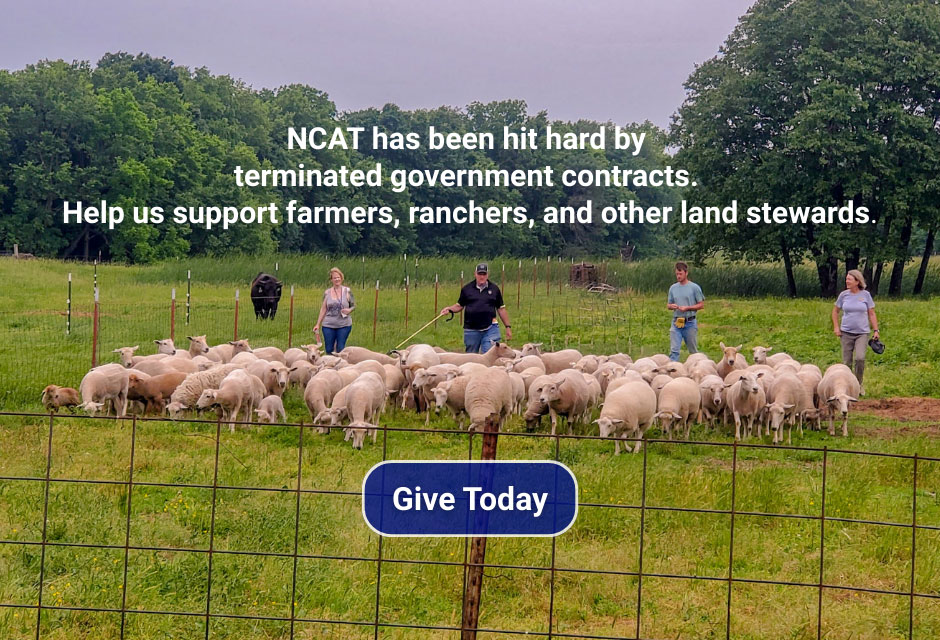Wisdom from SHEpherds: ATTRA’s She’s Raising Sheep Podcast Series, Episodes 1-5
 Print This Post
Print This Post
By Linda Poole, Regenerative Grazing Specialist
ATTRA has a new podcast series on women shepherds – but why should you care?
Maybe because getting started with sheep is much easier with advice from top-notch mentors who openly share their experiences, both good and bad. Maybe because you’d enjoy hearing some funny stories and cautionary tales about sheep. Or perhaps because, even after decades raising sheep, who has ever had a true heart-to-heart with another shepherd without learning something of value? There’s no telling what gems might come from conversations that start with sheep but end up being about so much more. Sheep talk offers wisdom, humor, and hope along a path toward agricultural resilience and joy.
So, when the chance came to launch an ATTRA podcast series featuring women shepherds, I leapt at it! It was my lucky break to talk with the most intriguing, smart women I know who have built successful businesses around sheep: Why did they decide to raise sheep? How did they start? What barriers did they encounter, and how did they deal with them? What do they have for infrastructure? Is their shepherding profitable? I asked these questions and got honest, insightful answers through interviewing SHEpherds for the series we dubbed She’s Raising Sheep.
I hope you’ll listen in to learn and laugh along with me. And while listening, if you think of questions I should ask, or if you know a fascinating female shepherd to feature, drop me a line at lindap@ncat.org. This series will continue as long as there are good stories to tell, and the podcasts will get better with each episode if you chime in with ideas and pointers!
Can’t decide which episode to listen to first? Here are some highlights to help you choose:
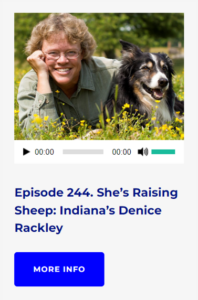 Denice Rackley from Indiana raises North Country Cheviots and tells us how she went from city girl to skilled shepherd while having fun and not going broke.
Denice Rackley from Indiana raises North Country Cheviots and tells us how she went from city girl to skilled shepherd while having fun and not going broke.
- Start with what your advantage is. Every location has its good points. . . . List your advantages and then decide what is the sweet spot for your marketing. . . . Then you can tailor the breed of sheep to meet your market, to meet the best return on investment.
- You can accept problems [with your sheep] or you can get rid of them and have genetically superior, healthier sheep.
- On infrastructure: Ideally, you’d have the perimeter fenced, and then maybe cross-fence with electronet, but I don’t have that. I have guardian dogs that stay with my sheep and then I have Border Collies to assist me with everything else.
- I think with anything under hundreds of sheep, you’re going to need a side job. The market is not stable enough for me to feel comfortable counting on that for a single income.
 Bev Trowbridge is an agroecologist raising Wiltshire Horns in New Zealand. In accordance with her dedication to farming sympathetically with nature, Bev says:
Bev Trowbridge is an agroecologist raising Wiltshire Horns in New Zealand. In accordance with her dedication to farming sympathetically with nature, Bev says:
- Sheep are actually the best biostimulants you could have.
- I’m very keen on managing land using the native breeds, which were adapted to farming on that terrain and in that climate because obviously they have traits and attributes particularly suited to that landscape.
- The real key is improving the mineralization of your soil so that you’re not having to treat animals unnecessarily, pharmaceutically for things that are actually a problem of low mineralization . . . and one of the benefits of farming this way is that the cost of your inputs just goes through the floor.
- Farming sympathetically with the environment has a very long learning curve. If people can join a local support group, that’s probably one of the best things they can do.
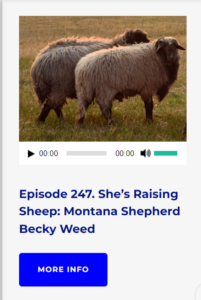 Becky Weed raises an ever-evolving flock of long-wool crossbreds in the Gallatin Valley of Montana. In a spectacular landscape that attracts both predators and land developers in large numbers, Becky shares how “adaptability is the name of the game.”
Becky Weed raises an ever-evolving flock of long-wool crossbreds in the Gallatin Valley of Montana. In a spectacular landscape that attracts both predators and land developers in large numbers, Becky shares how “adaptability is the name of the game.”
- On shepherding: To me, it’s mostly about being tuned into what your landscape is suitable for first, and then everything else just kind of feeds into it. But make it something you enjoy!
- I was interested in sheep because they were well-suited to a grass-based approach to managing a piece of land. I didn’t have a really large landscape to work with, and so it seemed more practical than cattle or bison. . . . I didn’t have much experience, and [shepherding] just seemed like something that was more within reach.
- I’ve always been as interested in landscape as I have been in livestock, and sheep seemed like a means to that end. . . . I’ve been thinking more about effective ways to eventually be able to hand this place off to younger people who will stay in agriculture, and I’ve become increasingly interested not in sheep per se but in figuring out appropriate ways to reintegrate cropping and livestock.
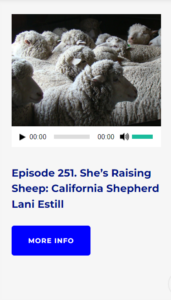 Lani Estill’s family raises Rambouillets on the California-Nevada border. Lani’s sweet spot is in the fiber end of the sheep business, where Fibershed’s Climate Beneficial FiberTM certification boosts her profit and land health.
Lani Estill’s family raises Rambouillets on the California-Nevada border. Lani’s sweet spot is in the fiber end of the sheep business, where Fibershed’s Climate Beneficial FiberTM certification boosts her profit and land health.
- I wanted to be able to share with children [about] wool, the whole process from sheep to sweater – and realized I probably better be able to do all that stuff. That started me on my journey with fiber.
- When I had the opportunity to start in the wool business, I was absolutely thrilled. My mentor in that was Rebecca Burgess with Fibershed.
- This approach that Rebecca brought was great because I really want to do conservation projects that improve our land. . . . When Rebecca and the Carbon Cycle Institute, Dr. Jeff Creque, came to request to do a Carbon Farm Plan and do some projects, that just resonated with me. . . . I love to be able to draw down carbon and be part of the solution.
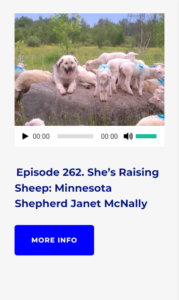 Janet McNally from Minnesota uses Ile de France genetics to improve her grass-based sheep breeds, the Tamarack and the Tamarack Prolific. One of the most respected sheep producers in the U.S., Janet’s success emerged from decades of dealing creatively with wolves, barber pole worms, drought, and the physical challenges of aging. Janet’s shepherding journey proves that, with determination, observation, and adaptive management, that which doesn’t kill us just makes us stronger.
Janet McNally from Minnesota uses Ile de France genetics to improve her grass-based sheep breeds, the Tamarack and the Tamarack Prolific. One of the most respected sheep producers in the U.S., Janet’s success emerged from decades of dealing creatively with wolves, barber pole worms, drought, and the physical challenges of aging. Janet’s shepherding journey proves that, with determination, observation, and adaptive management, that which doesn’t kill us just makes us stronger.
- We had a pack of 23 wolves move in. . . . and we lost 75 lambs total in a period of 10 days.
- I put 180 ewes inside four rolls of electronet. Well, 180 ewes are going to eat up all the vegetation in that [area] very quickly . . . so I had to keep moving them. I decided it was better to bottle-feed a few lambs orphaned in the shuffle than it was to just keep feeding them to the wolves.
- I feed hay once a year. We put the bales out on the pasture, wherever the grass looks the poorest. . . . The sheep attack the bales kind of communally. . . . The fertilizer value [of the hay left behind] was worth more than the value of the hay wasted . . . and where a bale was fed the year before, there’s two to three times more grass.
- Never hold a bucket of feed [for sheep] while wearing snowshoes!
Related ATTRA Resources:
Denice Rackley: What Your Stockdog Can Teach You About Livestock
Janet McNally: Undaunted Grazing: Turning Problems into Profit
Other Resources:
Clearfield Stockdogs, Denice Rackley
Muriwai Valley Farm, Bev Trowbridge
Thirteen Mile Lamb & Wood Company, Becky Weed
Lani’s Lana, Lani Estill
Tamarack Lamb & Wool, Janet McNally
This publication is produced by the National Center for Appropriate Technology through the ATTRA Sustainable Agriculture program, under a cooperative agreement with USDA Rural Development. ATTRA.NCAT.ORG.

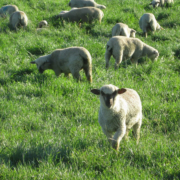
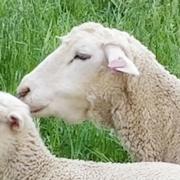
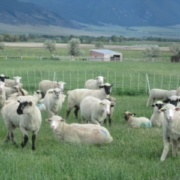

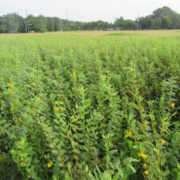

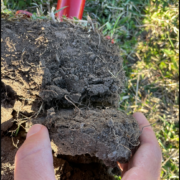
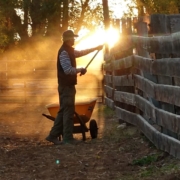
 CanvaPro
CanvaPro

